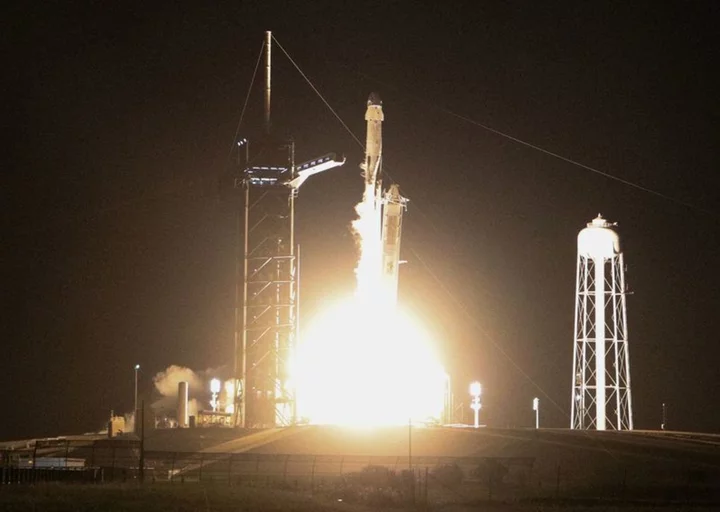
Amazon taps SpaceX's Falcon 9 rocket to help launch Kuiper satellites
By Harshita Mary Varghese and Joey Roulette (Reuters) -Amazon on Friday said it booked three Falcon 9 launches with Elon
2023-12-02 07:55
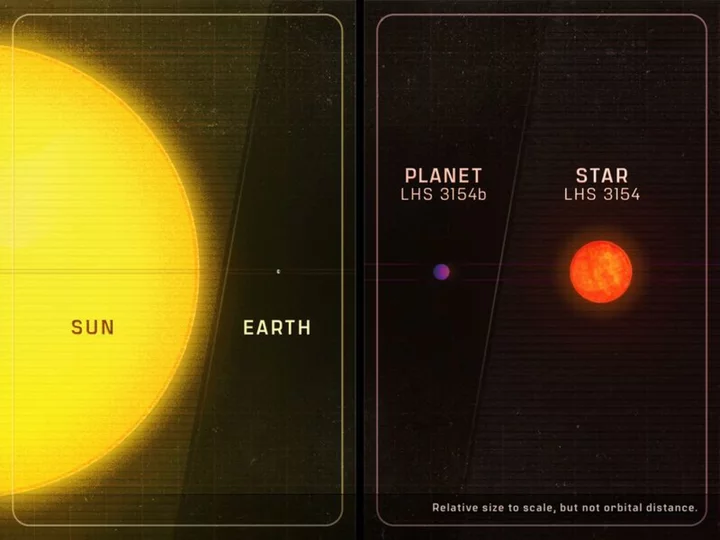
Astronomers surprised to find planet 'too massive for its star'
By Will Dunham WASHINGTON Our Milky Way galaxy's most common type of star is called a red dwarf
2023-12-01 23:53
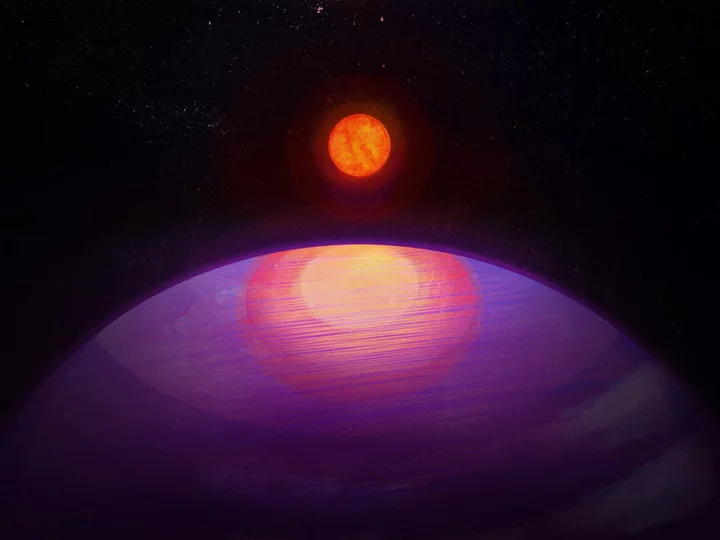
Scientists find huge planet that shouldn’t exist
Scientists have found a vast planet, so large that it should not exist. The planet appears to be too big for its sun, and therefore calls into question our understanding of how planets and solar systems form, according to the researchers who found it. The planet is more than 13 times as massive as Earth. It orbits around a star that is nine times less massive than our Sun. As such, the ratio between the two of them is 100 times higher than it is between the Earth and our sun. It is the first time that a planet with such a high mass has been seen orbiting a star with such a low amount of mass. And the discrepancy is so large that scientists thought such a planet could not exist. “This discovery really drives home the point of just how little we know about the universe,” said Suvrath Mahadevan, from Penn State. “We wouldn’t expect a planet this heavy around such a low-mass star to exist.” When stars are formed, out of large clouds of gas and dust, that material sticks with the star as a disc that orbits around it. Planets can then form out of that extra material, and go on to make a planetary system like our own. But science would suggest that the disc around the star in the new paper, known as LHS 3154, would not have enough material to make a planet so large. “The planet-forming disc around the low-mass star LHS 3154 is not expected to have enough solid mass to make this planet,” Mahadevan said. “But it’s out there, so now we need to reexamine our understanding of how planets and stars form.” The finding is reported in a new paper, ‘A Neptune-mass exoplanet in close orbit around a very low mass star challenges formation models’, published in Science. Read More Astronomers find unprecedented ‘disc’ around distant planet Planet too big for its sun ‘is challenging the idea of how solar systems form’ Elon Musk’s SpaceX rockets are punching holes in edge of space
2023-12-01 03:27

Astronomers find unprecedented ‘disc’ around distant planet
Scientists have found the first ever disc structure around a star outside of our own Milky Way. The disc is around a young massive star forming in a stellar nursery called N180. It is within the Larg Magellanic Cloud, a dwarf galaxy that neighbours ours. The disc is 163,000 light years from Earth – meaning that it is not only the first to be detected outside of our galaxy, but also the most distant such disc ever seen. Matter cannot fall straight into a star. Instead, it flattens out, making a disc that spins around the star. Closer to the star, the disc rotates faster. Scientists caught that difference in speed using telescopes, confirming that it is a disc around a distant star. Scientists have seen such discs before, but only in our own galaxy. Being able to see them outside of the Milky Way is a remarkable feat of technology, scientists said. Lead author of the study, Dr Anna McLeod from Centre for Extragalactic Astronomy, Durham University said: “When I first saw evidence for a rotating structure in the ALMA data, I could not believe that we had detected the first extragalactic accretion disc; it was a special moment. “We know discs are vital to forming stars and planets in our galaxy, and here, for the first time, we’re seeing direct evidence for this in another galaxy. “We are in an era of rapid technological advancement when it comes to astronomical facilities. “Being able to study how stars form at such incredible distances and in a different galaxy is very exciting.” The findings are reported in a new article, ‘A likely Keplerian disk feeding an optically revealed massive young star’, published in Nature. Read More Astronomers find unprecedented ‘disc’ around distant planet Scientists find planets moving around in strange ‘rhythm’ Astronomers discover new six-planet system
2023-11-30 16:27
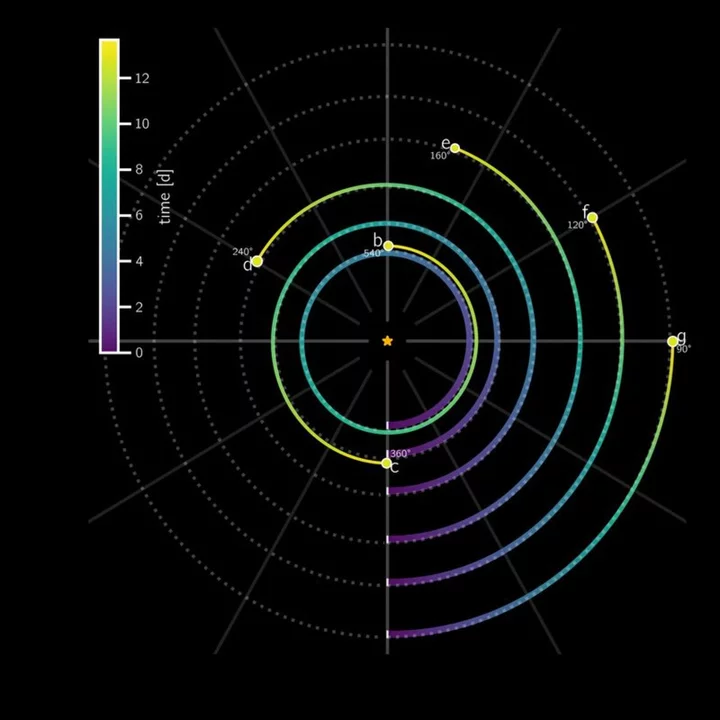
Six planets found in synchronized orbit may help solve cosmic puzzle
By Will Dunham WASHINGTON They are the most common type of planet observed in our Milky Way galaxy
2023-11-30 01:50
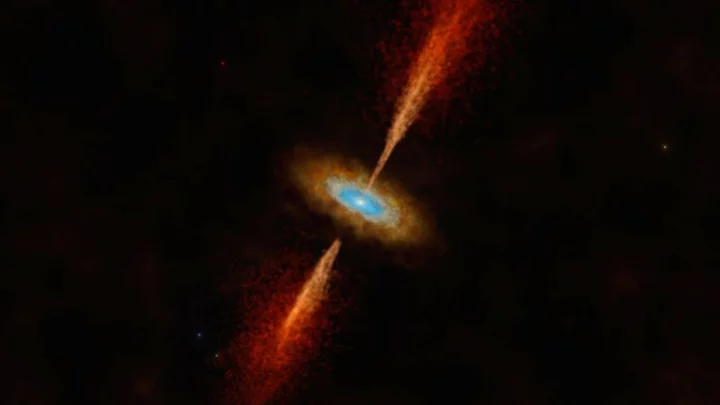
In a first, a newborn star's spinning disk is seen in another galaxy
By Will Dunham WASHINGTON Our sun and other stars form when a dense clump of interstellar gas and
2023-11-30 00:20
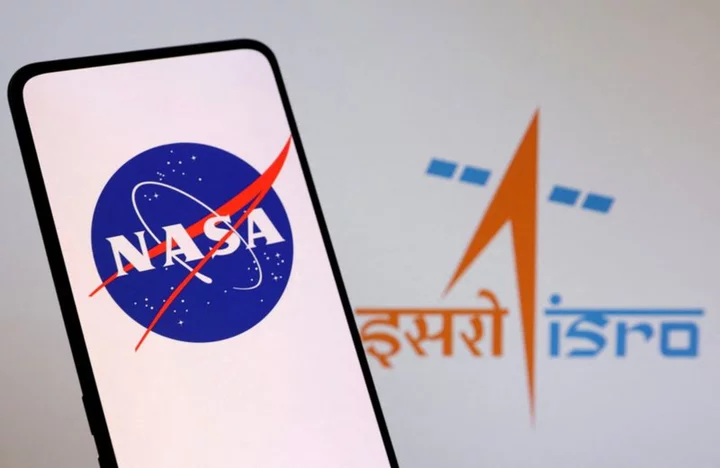
NASA to train Indian astronaut for ISS voyage in deepening space ties
By Nivedita Bhattacharjee BENGALURU NASA will train an Indian astronaut for a voyage to the International Space Station
2023-11-29 21:17
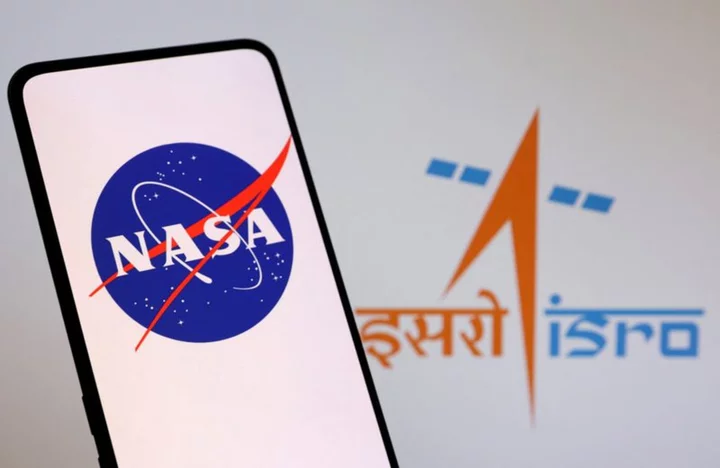
U.S. to launch joint remote sensing satellite with India early next year
The Indian Space Research Organization (ISRO) and the NASA plan to launch a joint remote sensing satellite for
2023-11-28 20:24
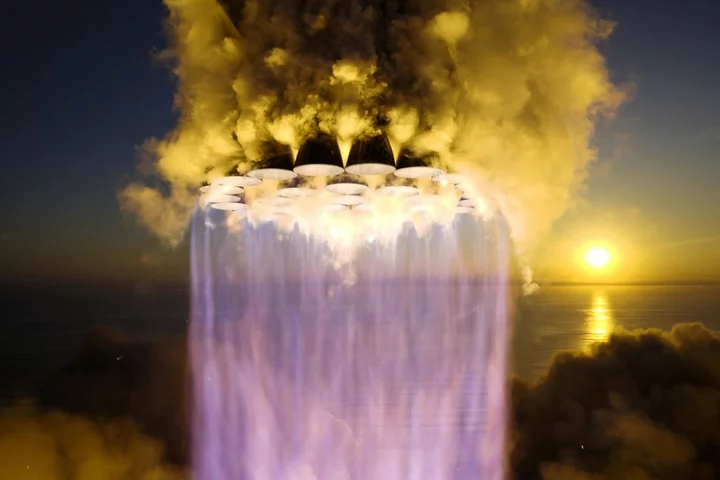
SpaceX hints next Starship launch attempt could be soon
SpaceX has hinted that flight tests of its Mars-bound Starship rocket system could begin to occur on a more frequent basis following a successful launch on Saturday. The tallest and most powerful rocket ever built lifted off from SpaceX’s Starbase facility in Boca Chica, Texas, on Saturday, seven months after the first launch attempt. Unlike the first attempt, both parts of the rocket were able to separate in mid-air without immediately exploding, while the newly-built launch pad was also able to withstand the force of the 33 Raptor engines firing simultaneously. “Just inspected the Starship launch pad and it is in great condition,” SpaceX boss Elon Musk posted on X on Sunday. “No refurbishment needed to the water-cooled steel plate for next launch. Congrats to SpaceX team and contractors for engineering and building such a robust system so rapidly!” The second flight test of the fully-stacked Starship rocket was beset by delays due to the high levels of debris from the destroyed launchpad and exploded rocket following the failed first attempt. Regulators said they would be working with SpaceX before a third flight test takes place, with the US Federal Aviation Administration confirming that no injuries or property damage was reported following Saturday’s launch. The fully-stacked Starship rocket system was the first to successfully perform a hot-stage separation, which saw the upper second stage launch away from the Super Heavy Booster mid-flight. Both parts of the rocket were destroyed shortly after they achieved separation, however SpaceX already has two Super Heavy boosters and three upper-stage vehicles currently undergoing preliminary testing, according to Next Spaceflight. Mr Musk has previously outlined his plans to build a fleet of hundreds of Starship rockets, with the hope of using them to establish a permanent human colony on Mars by 2050. SpaceX has already secured a multi-billion dollar contract with Nasa to develop Starship for the US space agency’s Artemis program, which will return humans to the surface of the Moon for the first time in 50 years. Read More SpaceX launches ‘zero fuel’ engine into space SpaceX Starship rocket loses contact after reaching space: Live updates Air Force officer breaks silence over ‘red, glowing’ UFO sighting: ‘Not a joke’
2023-11-20 22:21

US lawmakers urge scrutiny of SpaceX worker injuries after Reuters report
By Marisa Taylor and Joey Roulette WASHINGTON Three U.S. lawmakers are calling for greater scrutiny of worker safety
2023-11-18 20:28
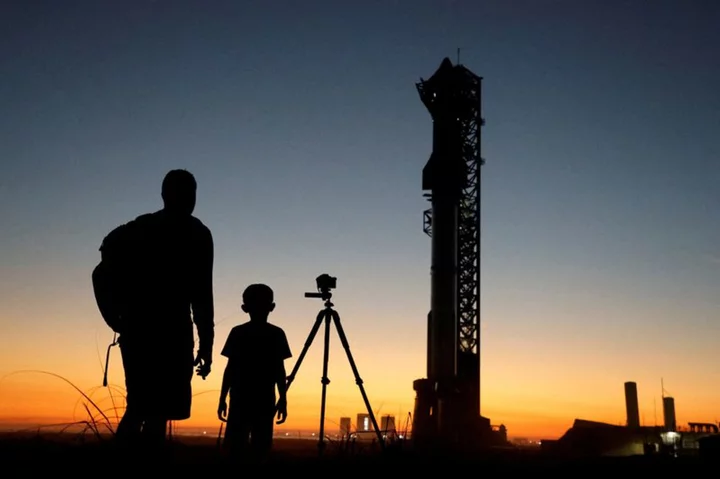
SpaceX Starship set for repeat test flight, seven months after last one blew up
By Joe Skipper, Joey Roulette and Steve Gorman BOCA CHICA, Texas SpaceX's next-generation spacecraft Starship, developed to carry
2023-11-18 14:24
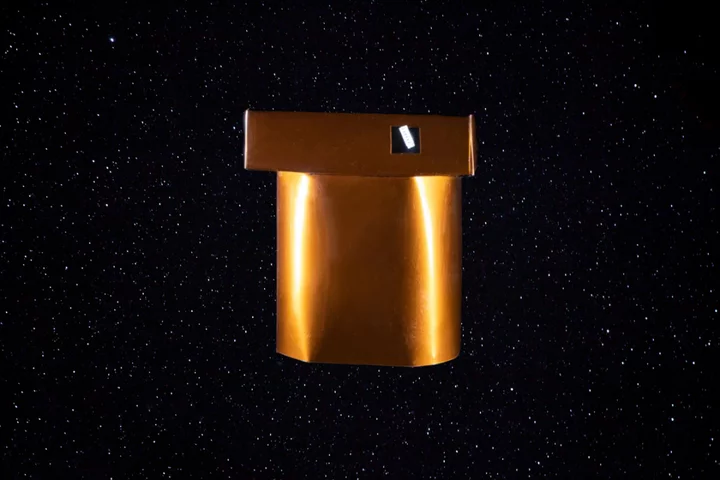
SpaceX launches ‘zero fuel’ engine into space
SpaceX has launched a new type of zero-fuel propulsion system into orbit, which its creators claim will revolutionise the space industry. The Quantum Drive engine, built by US startup IVO Ltd, was fitted on a microsatellite that entered orbit aboard SpaceX’s Transporter 9 mission, which lifted off from the Vandenberg Space Force Base in California. IVO claims that its technology is the world’s first commercially viable pure electric propulsion technology that works in space, drawing “limitless power for propulsion from the Sun”. It relies on a controversial theory called Quantized Inertia (QI) that challenges Isaac Newton’s Laws of Motion, with some physicists dismissing the technology as impossible. The QI theory was first proposed in 2007 by physicist Mike McCulloch, who drew on the mysterious properties of quantum mechanics to account for a new understanding of inertia as defined by Newton’s First Law of Motion. IVO chief executive Richard Mansell said his company performed 100 hours of vacuum chamber testing before the launch, during which the quantum drive produced a small amount of thrust. “Deploying Quantum Drive into orbit in a Rogue satellite on SpaceX Transporter 9 is a milestone for the future of space propulsion,” Mansell said. “Quantum Drive’s capability allows Rogue to produce new satellite vehicles with unlimited Delta V.” A pair of Quantum Drives are fitted to the BARRY-1 cubesat, which will take around one month to settle into its orbit before the next-generation propulsion system is activated in an effort to raise the satellites orbit by 100 kilometres. If successful, its creators say it will not only rewrite the critical principles of physics, but also form the foundation for a new era of space travel and exploration. “There are many things that have held back space exploration, one of them of course is power and propulsion,” said Mansell. “IVO’s quantum drive eliminates this propulsion problem by eliminating the fuel. By taking away the fuel, then you have essentially unlimited thrust.” Read More ‘It’s becoming like an airport’: How SpaceX normalised rocket launches
2023-11-17 23:25
